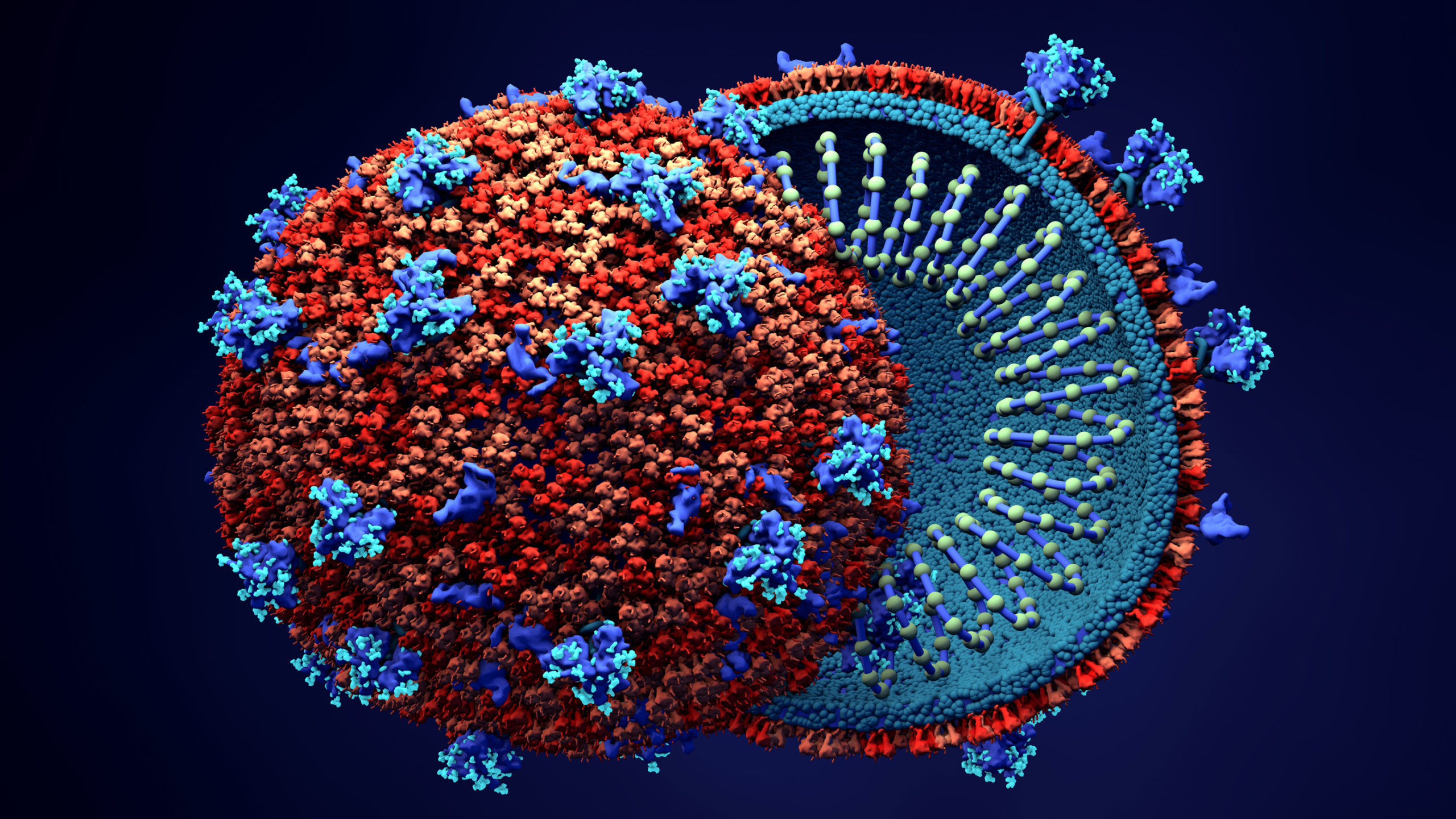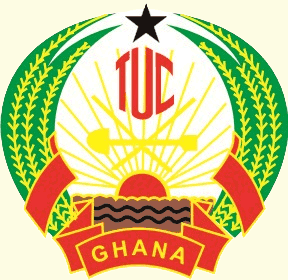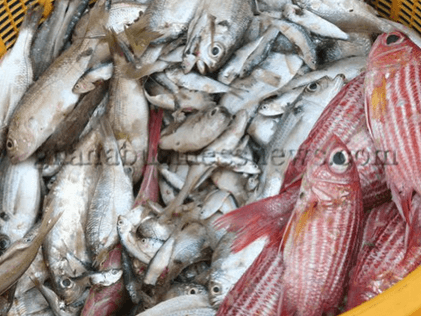
By Baptista Sarah GEBU
The Galamsey (illegal small-scale gold mining) menace in Ghana poses a significant threat to food security due to its extensive environmental and health impacts – Ghana is recording water contamination, air pollution, land degradation & food security, occupational hazards, and the spread of diseases among many others.
A public health emergency is a situation that poses a significant risk to the health of a community or population. These emergencies can arise from various sources, including infectious disease outbreaks, natural disasters, chemical or radiological incidents, and other health threats. At the current state of Ghana’s Galamsey menace, a call to declare it a Public Health Emergency is in the right direction.
Usually, the authority to declare a public health emergency typically lies with government officials and public health agencies. Here are some examples of who can declare such emergencies: At the national level, government officials like the President, Prime Minister, or other high-ranking government officials have the authority to declare a public health emergency.
Also, Public Health Agencies, and national public health agencies, such as the Centers for Disease Control and Prevention (CDC) in the U.S. or the Ghana Health Service (GHS) in Ghana, can play a key role in declaring and responding to public health emergencies.
At the regional level, regional authorities may have the power to declare public health emergencies within their jurisdictions, as this allows for a more localized response to specific threats.
Then at the international level, the World Health Organization (WHO) can declare a Public Health Emergency of International Concern (PHEIC) when an event poses a risk to multiple countries and requires a coordinated international response. An example is the declaration of the COVID-19 pandemic as a PHEIC. At the local level, local health departments or municipal authorities can declare public health emergencies to address threats within their communities.
The declaration of a public health emergency typically triggers the mobilization of resources, implementation of emergency response plans, and coordination among various agencies to protect public health and safety.
The current state of Ghana’s Galamsey menace presents some specific scenarios for each type of the identified health concerns.
Under Infectious Disease Outbreaks, when there is an outbreak of Ebola in a densely populated urban area, the virus spreads rapidly through direct contact with the bodily fluids of infected individuals, leading to high mortality rates. Public health officials quickly implement quarantine measures, and contact tracing, and provide medical care to contain the outbreak.
Discussing Natural Disasters, when a major earthquake strikes a coastal city, causing widespread destruction and displacing thousands of residents. The immediate public health response includes setting up emergency shelters, ensuring access to clean water and sanitation, and providing medical care for injuries and illnesses resulting from the disaster.
What can we make of Chemical Incidents? When a chemical plant explosion releases toxic gases into the atmosphere, affecting nearby communities, public health authorities coordinate an evacuation, provide decontamination services, and monitor the health of exposed individuals for potential long-term effects.
With Radiological Incidents, a nuclear power plant accident can result in the release of radioactive materials. The public health response here will involve evacuating affected areas, distributing iodine tablets to prevent thyroid cancer, and conducting long-term health surveillance to monitor for radiation-related illnesses.
There can be other health threats like a bioterrorism attack. Public health officials must identify and treat exposed individuals, decontaminate affected areas, and communicate effectively with the public to prevent panic and provide accurate information on protective measures.
Ghana’s Galamsey situation a Public Health Emergency
Ghana’s Galamsey (illegal small-scale gold mining) situation can be described as a public health emergency due to several significant health risks and environmental impacts it poses. Galamsey activities often involve harmful chemicals like mercury and cyanide, which can contaminate water bodies.
This contamination affects drinking water sources, leading to serious health issues such as mercury poisoning, which can cause neurological and developmental problems. By just observation without the result of any empirical research, water contamination issues are a major concern as many water bodies are polluted.
According to media reports on the extent of contamination, 60% of Water Bodies are polluted primarily due to Galamsey activities. This widespread contamination affects rivers, streams, and other water sources crucial for drinking, agriculture, and daily use. Specific water bodies affected – the Pra River, one of Ghana’s major rivers, has been heavily contaminated. The pollution is so severe that traditional water treatment methods are no longer effective in its purification.
Other rivers like the Ankobra, Birim, and Offin have also been significantly impacted. These rivers, once sources of clean water, have turned into toxic, muddy streams unfit for human consumption. Despite efforts by the government to combat Galamsey, enforcement has been inconsistent, and illegal mining continues to thrive as new licenses are issued. This has led to public outcry and calls for effective measures.
On air pollution, land degradation, and food security; the burning of mercury amalgam to extract gold releases toxic fumes into the air, posing respiratory health risks to nearby communities. Prolonged exposure can lead to chronic respiratory diseases and other health complications. The destruction of farmlands for mining activities also reduces agricultural productivity, threatening food security. This can lead to malnutrition and other health problems, particularly in rural communities that rely on subsistence farming.
Occupational hazards and the spread of disease are concerns as well. Miners, including children, often work in unsafe conditions without proper protective equipment. This exposes them to physical injuries, respiratory issues from dust inhalation, and long-term health problems from chemical exposure.
The creation of stagnant water bodies from mining pits can become breeding grounds for mosquitoes, increasing the risk of malaria and other vector-borne diseases. Additionally, the influx of people to mining areas can strain local healthcare systems and increase the spread of infectious diseases.
Research on mercury and cyanide contamination in Ghana highlights significant environmental and health concerns, particularly in areas affected by illegal mining activities. Here are some key findings:
- Mercury Methylation: A study in Southwestern Ghana found that mercury methylation rates in river sediments are influenced by the presence of cyanide. This according to the findings increases the bioavailability of mercy, making it more likely to enter the food chain and cause health issues.
- Water Pollution: Research indicates that rivers in mining areas, such as the Prestea-Huni Valley district, show high levels of mercury and cyanide contamination. The pollution affects water quality, making it unsafe for drinking and agricultural use.
- Health Impacts: Mercury exposure can lead to severe health problems, including neurological and developmental issues. Studies have shown that communities near mining areas are at higher risk of mercury poisoning, which can cause symptoms such as tremors, cognitive impairments, and developmental delays in children.
- Fatality Rates: While specific fatality rates due to mercury and cyanide poisoning in Ghana are not well-documented, the long-term health impacts can be severe and potentially fatal. Chronic exposure to these toxins can lead to cumulative health effects, increasing the risk of mortality over time. World Health Organization (20217), Mercury and health. Retrieved from https://www.who.int/news-room/fact-sheets/detail/mercury-and-health.
Addressing these issues requires stringent enforcement of mining regulations, public health interventions, and community education to mitigate the risks associated with mercury and cyanide contamination.
The interesting aspect of the whole conversation is this, – the Ghana Mineral Commission is still issuing new licenses to small–scale miners. Pathetic, isn’t it? These factors collectively pose a significant threat to public health, making the Galamsey situation a public health emergency.
Addressing this issue requires coordinated efforts from government agencies, local communities, and international partners to implement sustainable mining practices, enforce regulations, and provide health interventions.
The increased bioavailability of mercury due to cyanide presence in river sediments has led to several health issues in Ghana, particularly in communities near illegal mining activities. Here are some of the documented health impacts:
Neurological Disorders: Mercury poisoning can cause tremors, memory loss, and cognitive impairments. In severe cases, it can lead to Minamata disease, characterized by numbness in the hands and feet, muscle weakness, and damage to hearing and speech.
Developmental Problems in Children: Prenatal and early childhood exposure to mercury can result in developmental delays, reduced IQ, and learning disabilities. Children are particularly vulnerable to the neurotoxic effects of mercury.
- Kidney Damage: Chronic mercury exposure can lead to kidney dysfunction, including proteinuria (excess protein in urine) and nephrotic syndrome, which can progress to kidney failure if untreated.
- Respiratory Issues: Symptoms: Inhalation of mercury vapors during mining activities can cause respiratory problems, including chronic bronchitis and lung damage.
- Cardiovascular Problems: Some studies suggest that mercury exposure may increase the risk of hypertension and other cardiovascular diseases.
Several alternative livelihood interventions can be considered to help reduce dependence on illegal mining (Galamsey) in Ghana:
- Agricultural Development to focus on training and support as well as access to markets. Provide training in modern farming techniques and support for crop diversification. This can increase agricultural productivity and income for rural communities. Establish cooperatives and improve access to local and international markets for agricultural products, ensuring farmers get fair prices for their produce.
- Aquaculture to consider fish farming and market linkages: Promote fish farming as an alternative source of income. Provide training, start-up capital, and access to quality fish feed and fingerlings. Develop market linkages to ensure that fish farmers can sell their produce at competitive prices.
- Eco-Tourism to consider community–based tourism and training and infrastructure. Develop eco-tourism projects that highlight the natural beauty and cultural heritage of protected mining areas. This can create jobs in hospitality, guiding, and conservation. The Volta region of Ghana is a great beauty to explore and behold. Provide training in tourism management and develop the necessary infrastructure, such as lodges, good access roads, and visitor centers.
- Handicrafts and Small-Scale Manufacturing to implore skills and business development. Offer training in crafts such as bead-making, pottery, and textile production. Support artisans with tools, materials, and access to markets. Provide business development services, including marketing, branding, and financial management training.
- Renewable Energy Projects to offer solar energy and bioenergy. Promote the installation and maintenance of solar energy systems. Train community members in solar panel installation and maintenance, creating jobs and providing sustainable energy solutions. Develop bioenergy projects, such as biogas production from agricultural waste, which can provide both energy and employment.
- Vocational Training and Education to consider technical skills training and entrepreneurship programs. Establish vocational training centers offering courses in trades such as carpentry, welding, and electrical work among others. Provide certification and job placement services. Offer entrepreneurship training and support for small business start-ups, including access to microfinance and mentorship programs.
- Reforestation and Environmental Conservation to cover tree planting initiatives and conservation projects. Engage communities in reforestation projects, providing jobs in tree planting and maintenance. This can also help restore degraded lands. Develop projects focused on wildlife conservation and sustainable land management, creating employment opportunities in these areas.
- One Health Approach: Create awareness about the one health approach where humans, animals, and the environment must co-exist peacefully. The One Health approach is highly relevant to addressing the public health emergency posed by Galamsey activities in Ghana as a collaborative, multi-sectoral, and trans-disciplinary approach that recognizes the interconnection between people, animals, plants, and their shared environment, here’s how it can be applied.
- Under environmental health, monitoring and mitigation can be considered. Implementing environmental monitoring programs to track mercury and cyanide levels in water bodies and soil can help in identifying contamination hotspots and taking timely action to mitigate pollution. Considering rehabilitation, engaging in reforestation and land rehabilitation projects to restore ecosystems damaged by mining activities can reduce the spread of contaminants and support biodiversity.
- Human Health will explore health surveillance and public health campaigns. We can conduct regular health screenings in communities affected by Galamsey to detect and treat mercury and cyanide poisoning early. This includes neurological assessments and monitoring for kidney and respiratory issues. Educating communities about the health risks associated with illegal mining and promoting safer practices, can include information on avoiding contaminated water and food sources.
- Animal Health will explore two broad areas – wildlife protection and livestock health. Monitoring the health of wildlife in mining areas can be helpful, as animals can be indicators of environmental health. Protecting wildlife from exposure to toxic substances is crucial for maintaining ecological balance. Ensuring that livestock, which may graze near contaminated areas, are monitored for signs of poisoning will help prevent the transfer of toxins through the food chain to humans.
- Policy and Regulation will work on integrated policies and collaboration among stakeholders. Developing and enforcing policies that address the environmental, human, and animal health impacts of Galamsey will include stricter mining regulations and penalties for illegal activities. Encouraging collaboration between government agencies, NGOs, and local communities to implement One Health strategies effectively will ensure a coordinated response to the multifaceted challenges posed by illegal mining.
- Research and data sharing will promote interdisciplinary research and community involvement. Promoting research to explore the connections between environmental contamination, human health, and animal health. Sharing data across sectors can lead to more comprehensive solutions. Involving local communities in research and monitoring efforts will empower them to take an active role in protecting their health and environment.
The Galamsey (illegal small-scale gold mining) menace in Ghana poses a significant threat to food security due to its extensive environmental and health impacts. Here’s a detailed look at the situation and potential ways forward:
Impact of food security on soil, water contamination, and labour shift and the way forward. The galamsey menace is destroying Ghana’s arable lands as the illegal mining activities have led to the widespread destruction of fertile agricultural lands. According to a media report, the excavation and removal of topsoil make these lands unsuitable for farming. As a consequence, there is reduced agricultural productivity and food supply, leading to higher food prices and increased reliance on food imports.
The use of mercury and other heavy metals in gold extraction contaminates soils and water bodies. These toxins can be absorbed by crops and enter the food chain causing contamination to crops and livestock. A further ripple effect is this- Ghana’s crops and livestock can face rejection in the international markets affecting agricultural exports.
The individuals including farmers are drawn to the potentially lucrative venture but illegal mining activities leading to a shift in labour from agriculture to mining can cause decreased agricultural labour force, further reducing food production and exacerbating food insecurity.
Food for Thought and Action:
On the way forward, there must be stricter enforcement of mining regulations, public health campaigns, alternative livelihood programs, environmental rehabilitation, and one health approach as well as policy and stakeholder collaboration. As a people, we must work to;
- Strengthen the enforcement of existing mining laws and regulations to curb illegal mining activities. This includes increasing penalties for illegal mining and improving monitoring and surveillance.
- Launch public health campaigns to educate communities about the dangers of mercury and other toxic substances used in illegal mining. Promote safer mining practices and alternative livelihoods.
- Develop and support alternative livelihood programs to provide sustainable income sources for communities affected by Galamsey.
- Implement large-scale reforestation and land reclamation projects to restore degraded lands. This includes planting trees, restoring soil fertility, and cleaning up contaminated water bodies.
- Adopt a One Health approach to address the interconnected health impacts on humans, animals, and the environment.
- Foster collaboration between government agencies, NGOs, local communities, and international partners to develop and implement comprehensive policies. Organize national dialogue to find sustainable solutions ensuring all stakeholders are involved in the decision-making process.
- And very importantly, is for the general populace to know what time it is in history to prepare as the happenings of our time is a cause for change.
For the second consecutive time, Ghana, under the leadership of Akufo-Addo and Bawumia, has been featured on Al Jazeera for negative reasons. The first instance was the GOLD MAFIA Documentary, and now it’s the GALAMSEY DISASTER, highlighting the government’s ineffectiveness in addressing these issues. It’s truly disheartening.
Baptista is the Executive Director of ProHumane Afrique International, a philanthropic, development & and think tank organization working with communities and individuals to create sustainable solutions to transform communities through diverse pro-poor initiatives Call or WhatsApp: 233(0)262-213-313.
The post The galamsey menace prompts a public health emergency declaration. appeared first on The Business & Financial Times.
Read Full Story













Facebook
Twitter
Pinterest
Instagram
Google+
YouTube
LinkedIn
RSS